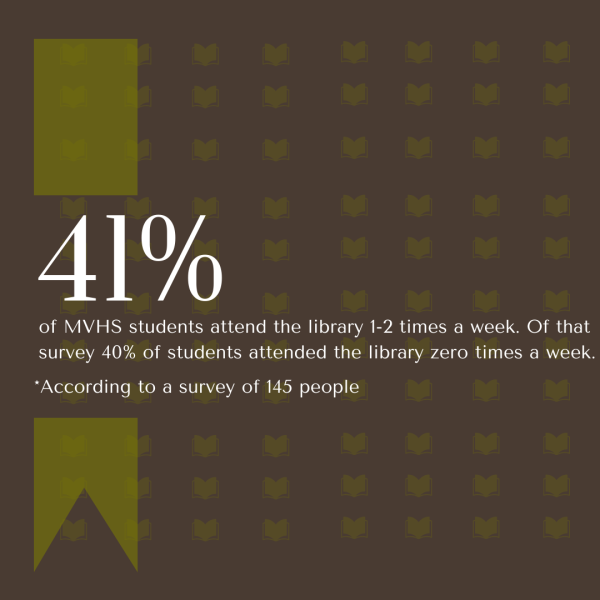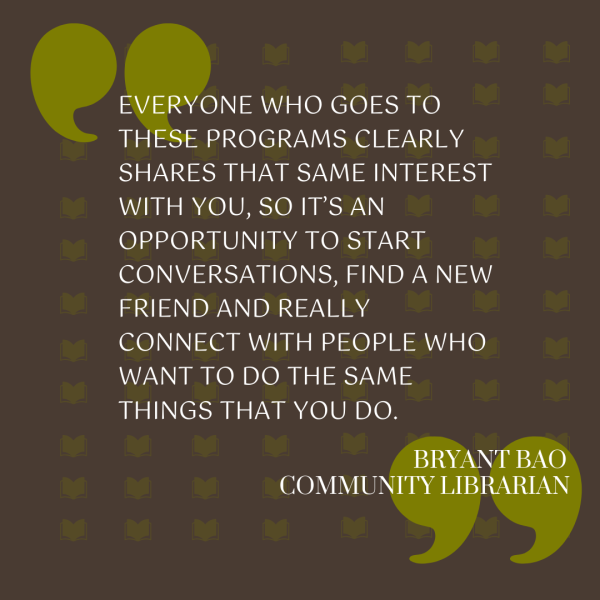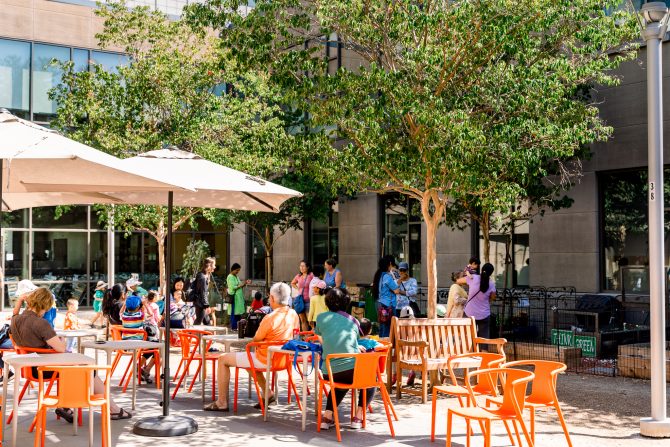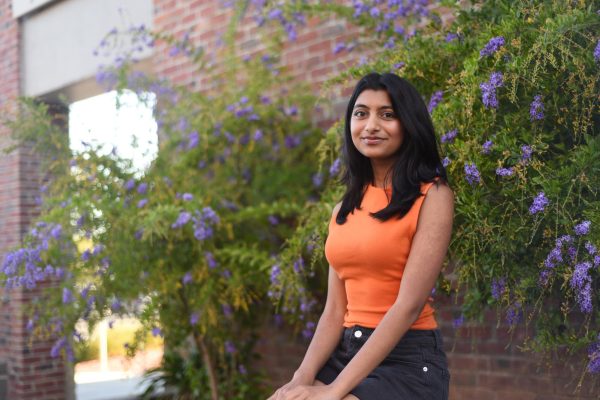Originally founded in 1912 by Librarian Fanny Jollyman, the Cupertino Library has grown into one of the most popular hubs of the city, with visitors and residents checking out books, visiting its “Coffee Society,” studying or attending events in the 54,000-square-foot facility. Although prefaced as an environment for people of all ages to check out books and read, the facility has adapted to Cupertino’s competitive culture, with teenagers filling up the rooms on the second floor to study or Cupertino organizations hosting an event for kids or teens to catch a break.
Junior Elizabeth Trotter visits the library four times a week to maintain her habit of reading, one that started when she was in second grade. Trotter also says there has been a change in environment at the Cupertino Library, noting that teenagers within her age range tend to use the building as a study or school space instead.
One of these teenagers is sophomore and FBLA Director of Public Relations Kate Yang. As an officer of FBLA, Yang and other members of the club are expected to meet at the library for a study session each Saturday from 1 p.m. to 3 p.m. to prepare for upcoming competitions.
“[Study sessions] definitely help people feel more organized,” Yang said. “It’s a good experience and a great way for members and officers to get feedback on their competitions and know where they can get help. The fact that it’s very silent [and] there’s a lot of room for people to move around really helps people stay productive and on task. If a member is at home or at school, it’s easy for them to procrastinate or get distracted.”
Trotter agrees with Yang, noting the social pressure of being quiet in the library forces her to stay on task and abstains from using her phone. To accommodate the growing number of students who use the library as a study space, Cupertino Community Librarian Bryant Bao has designated specific rooms for visitors. This includes four rooms guests can use for free, including a teen room, and a variety of meeting rooms that can host eight to 34 people. However, Yang has found some difficulties in obtaining such rooms for FBLA study sessions, noticing that the rooms can be crammed and hard to book due to availability.
While Bao notes a growing number of students have used the library as a study space, he feels this hasn’t affected the population of readers, especially since the library started pushing for online services, such as ebooks, through an online library due to the pandemic. Trotter has utilized such resources, sometimes checking out books online if she’s too busy to go to the library herself.

“The pattern that we’re seeing with checkouts is that we’re floating close to what we would have seen in the past, and that has not changed in any of the age groups noticeably,” Bao said. “Students who are coming in are still checking out about the same that they would previously during the pandemic. The only noticeable difference is that because there’s less people coming, there’s less checkouts overall.”
Similarly, Yang has noticed the growing activity and excitement in the kids section of the library, a popular spot for local parents and young children to check out books or engage in activities. For example, the library encourages their summer reading event, garnered towards younger kids who receive a prize for the amount of books they check out during the summer.
“A large segment of the population does come in for books [for their kids downstairs] in the children’s area,” Bao said. “They’re there to [get] their kids started on reading, making sure they’re ready for kindergarten and making sure that they have the material necessary to [succeed].”
Other than just being used for reading and studying purposes, Bao and Yang have found the library to host many regular events, with two new community rooms built last April. Bao notes the new additions have contributed to increasing the amount of programs the library can offer. For Yang, she finds the events are geared towards young kids or seniors. Some of the most notable events the Cupertino Library has hosted include the “International Movie Night” hosted for teens and the “Senior Line Dancing,” an event that has had almost 50 participants.
“We’ve been inviting folks that we know from our sister branches that have been good presenters or do good for what they’re offering,” Bao said. ”That said, we also have a lot of community organizations who reach out to us who want to work with the library, like, recently we had ‘The Friends of the Steven Creek Trail,’ a volunteer organization who does cleanup. We hosted a space for them to be able to just show off what’s been done. Again, that’s part of what we do with our space is to help global organizations to promote in different words about what they do.”
Bao notes expanding and advocating for more events relies on community feedback, so they utilize survey forms to ensure the library remains relevant and implements visitors feedback to foster a welcoming environment. While the library has received feedback on issues like lack of parking spaces and booking availability, Bao hopes event-goers share what events they’d like to see in the future to appeal to the whole community.

“Everyone who goes to these programs clearly shares that same interest with you,” Bao said. “So it’s an opportunity to start conversations, find a new friend and really connect with people who want to do the same things that you do, and who may have more knowledge than you on this topic, whatever it may be. There are many fantastic stories of people meeting someone they otherwise would not have connected with.”
While the library has pushed for more community bonding through these events, maintaining traditional services has been key to appeal to the population of readers. This includes expanding the variety of physical media offered through visitor feedback. Ultimately, while the library has adapted as an environment for strictly academic purposes to an engaging center, Bao believes this change is beneficial to people with different interests.
“I think it’s just a great way to give people a break from their studying and have something to get you kind of stimulated and excited,” Bao said. “It’s just overall good for mental health and community building so that everyone who’s here isn’t necessarily [here for books]— sometimes they go to events, they start chatting with people to get to know each other and learn how you have the same hobby as me. And that’s kind of the whole point of the library as a community space. Obviously, our bread and butter will always be books and other information, but we are a hub for community members to meet, get to know each other and create those bonds.”










